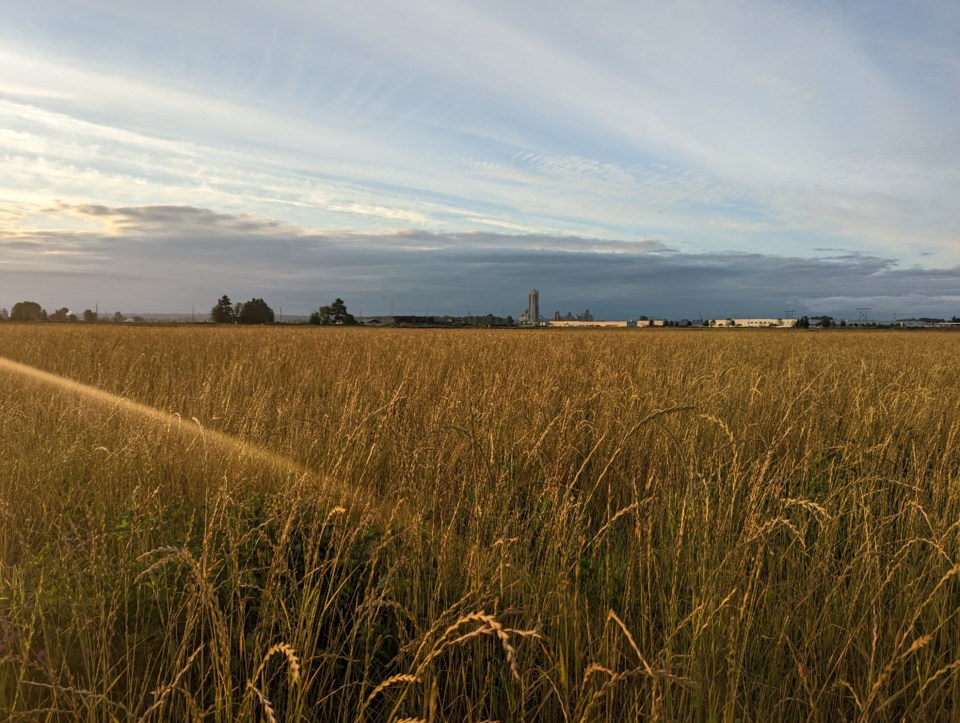It’s May in Delta and I’m standing in a field along Boundary Bay as the sun is rising, keeping watch for any bird I can hear or see. A Northern Harrier is hovering just above the field scouting for voles, a Common Yellowthroat (warbler) is calling, perched on top of a blade of grass, and Barn Swallows are whirling around overhead catching insects.
This particular field is a grassland set-aside—a field that was planted by farmers with a mix of grasses and left to rest for up to six years. These fields resemble the native grasslands which were part of the historic Fraser River delta ecosystem on the Delta lowlands.
To provide habitat for wildlife and promote soil health for agricultural fields, Delta Farmland & Wildlife Trust (DF&WT) offers a cost-sharing partnership with farmers to plant grassland set-asides. Since 1993, more than 14,000 acres of rotational set-asides have been established, playing an important role for wintering wildlife including Barn Owls and Great Blue Herons.
During the spring of 2022, I surveyed 12 grassland set-aside fields in Delta and Richmond to see how these habitats are being used by breeding birds. I observed 47 species using the habitat during their migration, for foraging and for setting up breeding territories.
One of the birds which I saw in every field and on every day of surveying, was the Barn Swallow. Barn Swallows nest in structures such as barns or houses and the tall-grass habitat provided by set-asides is their ideal foraging habitat.
Since the 1980s, the population of Barn Swallows in Canada has rapidly declined, and one of the contributing factors is likely the loss of breeding and foraging habitat. Partnerships between the DF&WT and local farmers which promote stewardship programs, including grassland set-asides, are crucial to providing habitat for our local populations of birds, including Barn Swallows.
Editor's note: Nature Notes is a monthly column produced by the Delta Naturalists Society and their community partners.




